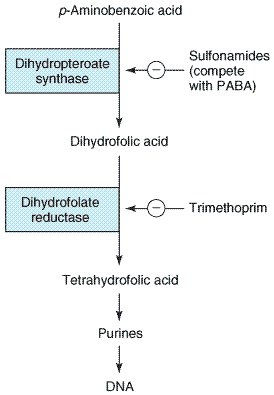- PLT regulated by 3 categories of substances
- agents outside plt, act on plt membrane receptors - catecholamines, collagen, thrombin, prostacyclin
- agents generated inside plt, act the same - ADP, prostaglandin D2, E2, serotonin
- agents generated inside plt, act inside plt - prostaglandin endoperoxides, Tx A2, cAMP/GMP
- PG synthesis inhibitor - aspirin
- ADP-induced plt aggregation inhibitor - clopidogrel, ticlopidine
- glycoprotein IIb/IIIa receptor blockers - abciximab, tirofiban, eptifibatide
- Tx A2 - arachidonate product --> plt change shape, degranulate, aggregate
- aspirin --> cyclooxygenase inhibitor irreversibly --> reduce tx A2
- other NSAIDs + salicylates --> do the same but action is reversible hence not used as antiplt
CLOPIDOGREL + TICLOPIDINE
- irreversibly block ADP receptors on plt
- use
- PTI with stent - prevent re-thrombosis
- prevention of vascular events - TIA, completed strokes, unstable angina
- GIT - nausea, dyspepsia, diarrhoea - 20% pt
- hemorrhage - 5%
- neutropenia - 1% (very serious) - regular monitoring WCC in first 3 months
- clopidogrel - dose dependent efx - hence need loading dose 300mg (80% plt inhibition) - 75mg maintenance - takes 7-10 days to reach antiplt efx hence the same time to wean off
Aspirin + clopidogrel resistance
- no objective studies
- varies from 5%-75% where thrombosis happens despite rx
GLYCOPROTEIN IIb/IIIa RECEPTOR BLOCKERS
- used in acute coronary syndromes
- IIb/IIIa complex acts as receptors for fibrinogen, vitronectin, fibronectin, and vWF --> as final common pathway of plt aggregation
- average plt has 50,000 copies of receptors --> ppl lacking these receptors = Glanzmann's thrombasthenia --> bleeding tendency
- abciximab - monoclonal antibody - used in PTI and ACS
- eptifibatide
- tirofiban - smaller molecule than eptifibatide - inhibit ligand binding to IIb/IIIa receptor
OTHER ANTIPLTs
- dipyridamole
- vasodilator
- inhibit adenoside uptake + cGMP phosphodiesterase activity
- by itself - no beneficial efx - need to combine with aspirin to prevent cerebrovascular ischaemia
DRUGS USED IN BLEEDING DISORDERS
Vitamin K
- fat soluble, found in leafy green veges
- human get it from veges + gut bactera
- confers biologic activity on factor 2,7,9,10 by modifying them
- 2 forms - K1 and K2 - K1 found in food, K2 found in human tissue + synthesised by bacteria
- requires bile salt for absoprtion
- onset 6 hrs, compete by 24 hrs
- best given IV + po, not sc (erratic)
- given to all newborn to prevent hemorrhagic disease of newborn (common in premature infants)
Plasma fractions
- spontaneous bleeding occurs when factor activity <5-10% of normal
- commonest: hemophilia A and B (christmas disease, IX deficiency)
- preparation
- prepared from large pools of plasma
- viral transmission elimited/reduced by pasteurisation
- but not prion disease
- now uses recombinant technology
- if hemorrhage to joint --> infuse factor VIII/IX to maintain 30-50% of normal concentration for 24 hrs
- soft tissue hematoma = minimum of 100% factor activity for 7 days
- hematuria = 10% activity for 3 days
- surgery/major trauma = 100% activity for 10 days
- has loading + maintenance dose
- desmopressin acetate - increases VIII activity with mild hemophilia /vWB disease --> can use in minor surgery like tooth extraction - given intranasal
- plasma protein fraction from whole blood
- treat deficiencies/qualitative abnorm of fibrinogen
- eg DIC/liver disease
- hemophilia A and vWB disease if desporessin not indicated and other stuff not available --> last resort as cryoprecipitate not treated to reduce risk of viral transmission
- aminocaproic acid (EACA) - competitively inhibit plasminogen activation - po and rapidly cleared
- tranaxemic acid
- analog of EACA
- 15mg/kg loading, then 30mg/kg QID
- uses - adjunct therapy for hemophilia, bleeding from fibrinolytic therapy, prophylaxis for intracranial aneurysm, postop bleed (GI, prostatectomy, bladder hemorrhage, drug induced cystitis)
- SE: intravascular thrombosis




